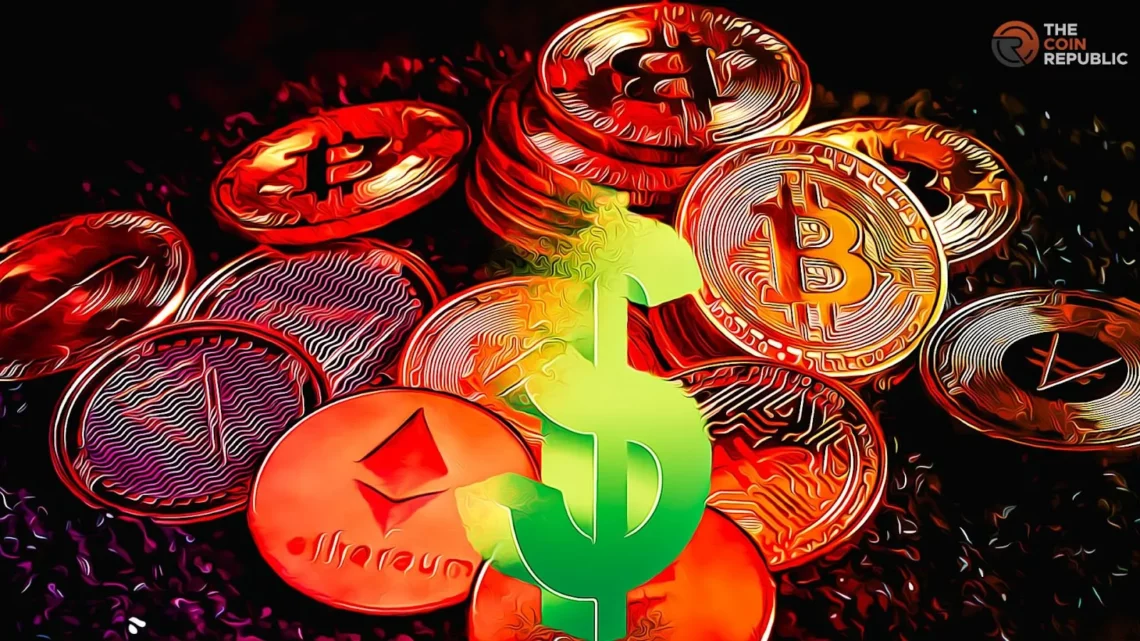- 1 The notion of lowering the hegemony of the U.S. dollar getting momentum worldwide.
- 2 Countries across the world are positioning their currencies to take advantage.
- 3 Digital assets also hold the potential but how significant it could be, still remains unclear.
The strength of an economy depends very much upon its currency and vice versa. The United States of America has been the leading economy in the world for decades now. And the U.S. Dollar had hegemony all over the world—from international trade to foreign reserves. But for the past several months, the greenback has been witnessing a threat over its dominance. The term used for it is famous as “de-dollarization.”
With the demand to decrease the dependency, many countries are preparing to initiate mutual trade eliminating the dollar. Other leading economies are looking for opportunities to act as an alternative if not completely replace it. Bitcoin (BTC) or other stablecoins like cryptocurrencies could also find their position
Leading Economies Pushing De-dollarization
De-dollarization was primarily coined for the process of decreasing the participation of the U.S. dollar in the economic operations of any country. Other powerful nations which do not fall in line with the United States—Russia and China—keenly looked to replace the greenback.
Digital assets and fiat currencies of other countries were brought forward as an option. The BRICS countries—Brazil, Russia, India, China, and South Africa—were among the first nations to carry on the notion.
The International Monetary Fund study suggested the depleting influence of native currency, where it found the U.S. dollar accounted for 71% of global foreign exchange reserves in 2001. By 2021, in the gap of 20 years, participation decreased and remained at about 59%.
Other findings indicate the emergence of other fiat currencies to compete with the hegemony of the greenback. Bloomberg reported that the Chinese yuan, for instance, overtook the U.S. dollar and became the top currency used for cross-border transactions. The change was significant as its participation increased from 0% in 2010 to 48% at present.
Are Cryptocurrencies In Position?
As far as Bitcoin and other cryptocurrencies are concerned to be treated as potential candidates in the race, they have their own complications. Bitcoin was created to become a medium of value exchange, replacing centralized currencies with decentralized ones.
But with time, gaining popularity and wide adoption, it turned to become more of a store of value rather than being one to use for transferring it. Potentially the “digital gold” stood in competition with gold, not with the dollar.
Stablecoins, on the other hand, can also be seen as a solution, but they hold their own shortcomings. The most significant one is their peg on the U.S. dollar. Today, the majority of stablecoins with a notable market capitalization of over 1 billion USD are pegged with dollars. So digital assets become prone to the efficacies of the dollar getting devalued.
As the fundamentals of de-dollarization suggest, it’s about making other fiat currencies replace the dollar. This indicates lesser chances for digital assets to hop on the opportunity. However, even if a smaller fraction of the liquidity from the U.S. dollar flows towards the cryptocurrencies, it is likely to make their prices go up in the longer timeframe.

Nancy J. Allen is a crypto enthusiast, with a major in macroeconomics and minor in business statistics. She believes that cryptocurrencies inspire people to be their own banks, and step aside from traditional monetary exchange systems. She is also intrigued by blockchain technology and its functioning. She frequently researches, and posts content on the top altcoins, their theoretical working principles and technical price predictions.


 Home
Home News
News










